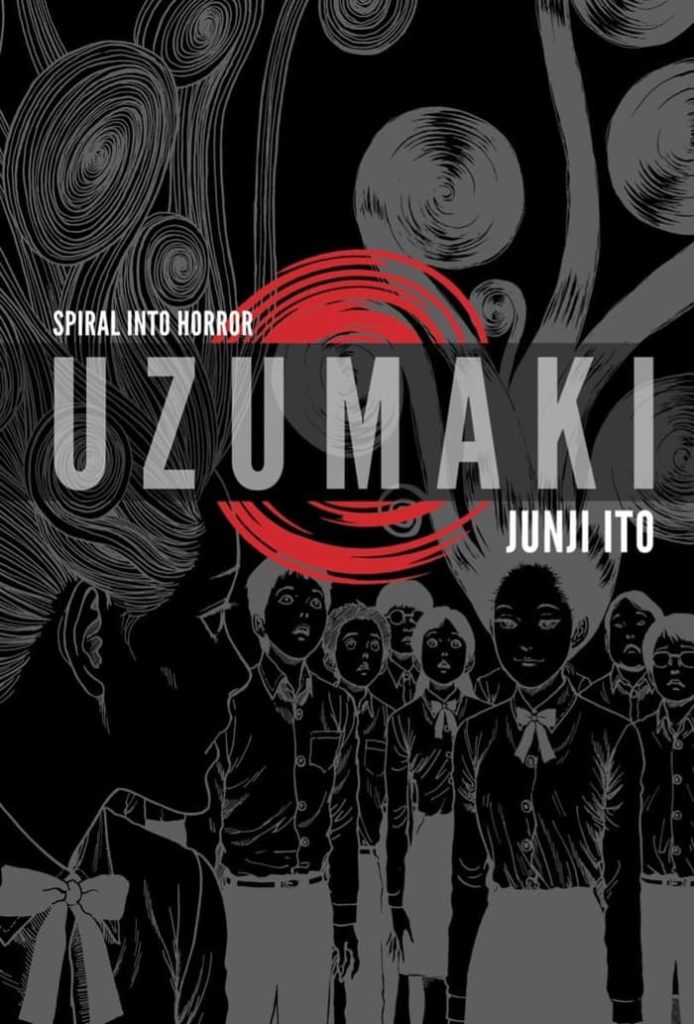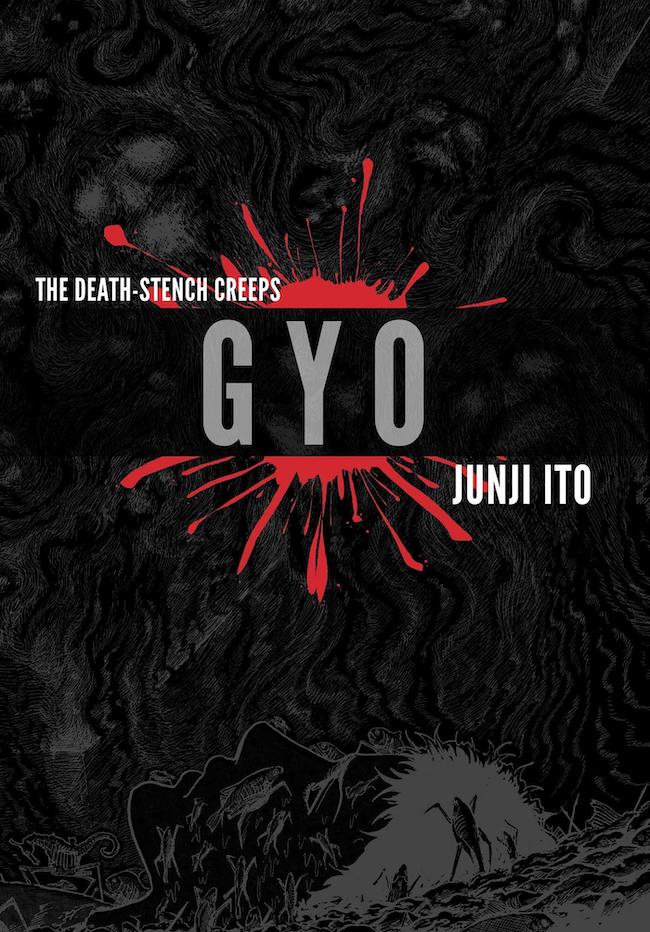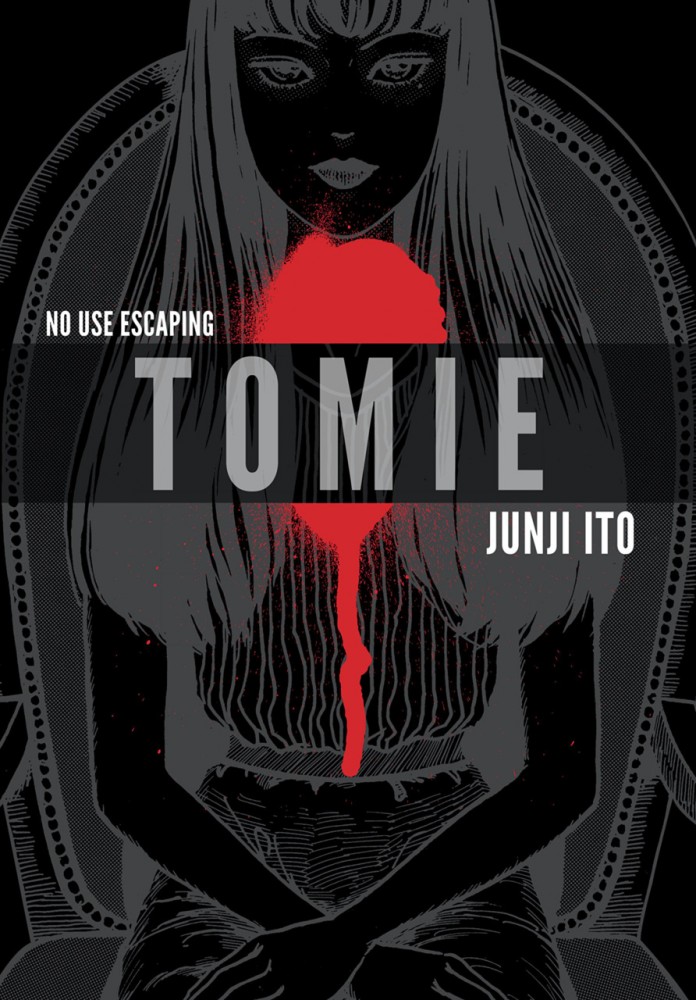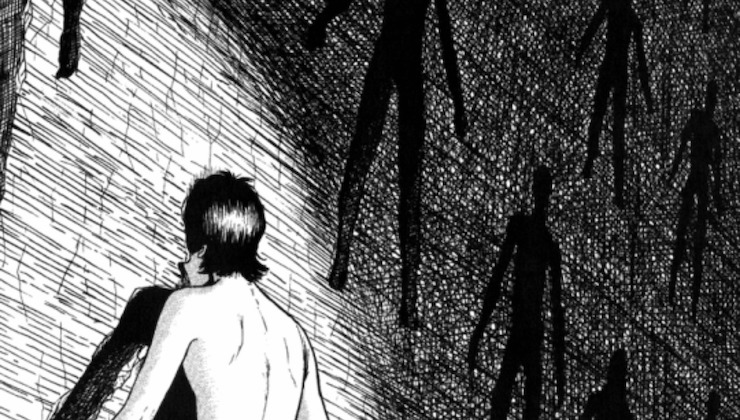sample heading
Engaging. Detailed. Gory. Memorable. Unique. Unsettling. Nuanced.
It would be easy to write an entire essay talking about how great Junji Ito’s work is, how his style and subject matter have left an indelible mark on the face of contemporary horror even outside the manga space. However, there are several cohesive elements in Ito’s narratives that make the mangaka’s oeuvre one that merits a closer look, even beyond its quality and lasting impact. Yes, Ito entertains with his creepy, pulpy tales, but what he puts on the page deserves to be analyzed with the same care and deconstructive tools we tend to reserve for novels, because his work is, at its core, about what it means to be human in extreme circumstances.

The horror community is mostly divided into two camps when it comes to Ito: those who love his work and those who haven’t read him yet. Sure, there are a lot of horror readers who fall somewhere else on that spectrum, but the two groups mentioned make up the largest percentage. In fact, it’s not uncommon to hear or read comments like “I’m not into manga, but I love Junji Ito.” The reason for that is simple: his work tends to reach inside us and touch a part of what makes us human, and that humanity is the first element I want to discuss.
The first element that makes Ito’s work so powerful is his obsession with what makes us human. His stories are full of monsters, and in many cases, monsters are born out of people who have lost their humanity. Take, for example, Uzumaki. Perhaps Ito’s best-known story, Uzumaki, which is Japanese for spiral, is a seinen horror manga (seinen meaning it was created for and marketed to young men) series that originally appeared as a serial in the weekly manga magazine Big Comic Spirits between 1998 and 1999. Since then, the chapters have been compiled into an omnibus, translated into various languages, turned into a movie, and appeared in the form of video games. Images from it can be found all over the web and even on t-shirts. The series tells the story of the citizens of Kurôzu-cho, a small town cursed by spirals. It deals with various characters as the curse progresses and their world turns into chaos (it spirals into mayhem… sorry, I had to do it). There is a secondary character named Katayama who becomes a snail. And he isn’t the only one. There are plenty of horrors in Uzumaki and people go through many horrible changes, but Ito uses those that turn into snails to illustrate how their transformation and loss of humanity makes them something lesser. When a bully pokes Katayama in snail form and people tell him to stop, his reply says it all: “Get off my back! He’s just a slug now! He’s not human anymore!”
But turning into a snail isn’t the only loss of humanity in the narrative; men who eat snail people lose their humanity by cannibalizing others and, later, group of children become monsters because they can use the power of the wind to destroy what they want.

In Gyo, humanity is also at the core of the narrative. Gyo follows Tadashi and Kaori, a young couple, as they fight to survive against a deadly invasion of mysterious undead fish with metal legs that are powered by an awful gas known as the death-stench. In one chapter, Tadashi runs into a soldier shooting down the machines, which at that point have started using people for fuel instead of fish. The soldier is blasting away at a man when Tadashi yells at him to stop shooting. The soldier’s reply echoes that of the bully poking Katayama in Uzumaki: “Look! They’re just feeding the machine! Even if they were alive, they’re not human anymore!”
For Ito, all horrors are things that affect who and what we are, and the worst are those that can make us lose our humanity. This sentiment appears time and again in his work, but there are two more elements I want to discuss, so I’ll leave it there instead of naming more examples.
The second cohesive element in Ito’s work is the power of love or desire. It sounds strange, because his stories are so bizarre and gory, but Ito knows that love, lust, and wanting something are usually powerful driving forces. The perfect example is Tomie, which follows a young, mysterious woman of preternatural beauty named Tomie Kawakami. Tomie’s mere presence makes men go crazy. Through seduction as well as psychological manipulation, she gets men to commit murder for her (with Tomie herself often being the victim). Tomie is the embodiment of desire, of going to any extreme to acquire that which we long for. It is an exaggerated version of that, sure, but the message is there: we will do bad things to get what we want. The same can be seen in “Used Record,” one of Ito’s many short stories. In “Used Record,” possession of an album containing a song recorded by a dead woman leads people to commit murder without an ounce of remorse. This element can be found in many other Ito narratives; love and desire push us forward, sometimes to save those we love or lust after and sometimes to murder them (please, don’t murder anyone).

The last element of Ito’s work I want to discuss is his understanding of the human psyche. Seeing horror fiction as simply storytelling that inspires fear is reductive. In fact, I’d argue that making readers feel uncomfortable is just as important. If I scare you as you’re coming into the house as a prank, your heart will eventually stop hammering against your ribs and you will laugh it off. However, if you become convinced there is an unwelcome presence in your home, you will not know peace for as long as you stay there. Jump scares are effective and sometimes memorable, but horror that gets under our skin and pokes at our psyche stays with us in much more powerful way. That Ito understand this is clear when we read stories like “The Enigma of Amigara Fault,” which is a nightmare for anyone with claustrophobia, or Shiver, which surely triggers those suffering from trypophobia and makes the rest of us profoundly uncomfortable… and probably makes people scratch themselves while they’re reading. This power to go beyond the page and affect us in profound ways is part of what makes Ito’s work so memorable and why he is a constant presence in our discussions.
Junji Ito is an artist who has managed to open up a wormhole between the world of nightmares and our own. The elements discussed here are the proverbial tip of the iceberg. I invite you to go dig into his universe if you haven’t done so yet. If you have, I invite you to return to it, because what waits there will surely remind you why we love horror so much.



